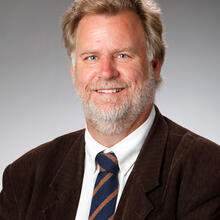Living Stones
The Lateran Basilica in Rome is not the home parish for many of us, though some might have visited it. It is the pope’s own cathedral, but we are parishioners at churches closer to home, with less ancient and lofty origins and nicknames like St. Joe’s and St. Mike’s. Our home parish is where we attend Mass, run the scouting den and bake cookies for the fall festival. For all of its foibles and problems, our home parish is, well, home. We can speak of the church in abstract terms, but the church is embodied in particular people, who together make up the body of Christ, and the particular buildings in which we worship.
So the feast of the Dedication of the Lateran Basilica in Rome appears remote, celebrating a building far away in which most Catholics have never set foot. Yet for all its antiquity, including the beautiful fourth-century baptistery, and its centrality for centuries as the cathedral of Rome and, once upon a time, the pope’s home, the Lateran is just a particular manifestation of the home parishes we find scattered throughout the world. It is a physical symbol of the spiritual body of Christ, the stones a sign of the “living stones” (1 Pt 2:5) that make up the church.
God does not need buildings to dwell in, but we need places to worship in order to offer our sacrifices to God and to worship with the people of God, who are not abstractions but ordinary flesh and blood people. Churches create a locus for worship and a forum for the community of God to gather.
These are ancient needs. Temple language, which permeates the Old Testament, reflects the need for a holy place to worship God. The temple is a place of God’s holiness and a place where God’s people can grow to be holy. In the vision of the future temple foreseen by Ezekiel, life-giving waters flow from the temple, bringing life to the trees around it “because the water for them flows from the sanctuary. Their fruit will be for food, and their leaves for healing.” The future temple was later re-envisioned in the Book of Revelation, in which John says, “I saw no temple in the city, for its temple is the Lord God the Almighty and the Lamb” (21:22).
It is God who is our ultimate desire. Church buildings, whether in Rome or down the street, do not create this need for God or satisfy our desire for holiness, but they do offer a place for us to gather and meet these needs. Jesus himself was often at the Temple to worship, and his criticisms of the Temple were not of the place as such, but of the way the house of God was treated as a marketplace. Jesus also points forward to the true temple of God when he says that his body, raised from the dead, will be the true temple.
The Apostle Paul continues to use a temple metaphor to speak of the whole church as the body of Christ, describing the church in Corinth—though it could be any particular parish church today—as “God’s building.” Each Christian is a part of this building, built on the only true foundation, Jesus Christ, “for no one can lay any foundation other than the one that has been laid; that foundation is Jesus Christ.” Paul goes on to speak of all the members of the church as “God’s temple,” in which “God’s Spirit dwells.” This temple must be treated with care, for “God’s temple is holy, and you are that temple.”
In stone and mortar, and in spirit and truth, we embody the church of Jesus Christ, as the body of Christ, given up for us and dwelling in us. A particular church in Rome, the Lateran Basilica, is a specific symbol of all of these images of the church and speaks to one other sign: the unity of the Catholic Church across the world, which might worship in a humble cement block structure, a 1960s open style or a beautiful local basilica, but is everywhere the same people of God gathered together as the body of Christ in order to worship the living God, who himself is the true temple.
This article also appeared in print, under the headline “Living Stones,” in the November 3, 2014, issue.








